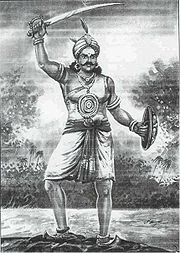
என்ன தலைப்பு எண்டு யோசிக்கேக்க இப்ப பேஸ்புக் ல என்ன கூடுதலா எல்லாரும் பண்ணுகினமோ அதையே வைப்பம் எண்டு வைச்சது தான்.
கற்காலம், இன்டஸ்டீரியல் காலம் எண்டதெல்லாம் போய் இப்ப பேஸ்புக் காலம் எண்டு சொல்லுற அளவுக்கு வந்து விட்டது . இந்த முன்னேற்றம் ஆரோக்கியமா இல்லையா எண்டதெல்லாம் வேறு விடயம் . கிட்டத்தட்ட முன்னூற்று ஐம்பது மில்லியன் பாவனையாளர்களை கொண்டுள்ளதாம் பேஸ்புக் . இணைய பாவனையாளர்களால் பார்க்கப்படும் இணையத்தள பட்டியலில் இரண்டாவது இடத்தில் இருக்கும் பேஸ் புக் கூகிள் ஐயும் முந்தினாலும் ஆச்சரியப்படுவதட்க்கு இல்லை .

சமூகவலைப்பின்னல் அமைப்பான பேஸ்புக் புதிய நண்பர்களையும் மறைமுக எதிரிகளையும் சம்பாதித்து தருகிறது . கூடுதலாக முதல் கணணியை ஆன் செய்தவுடன் நாம் ஜிமெயில் செல்வதோ வேறு இணையத்தளங்கள் செல்வதோ வழக்கம். இப்போது பேஸ்புக் போவது தவிர்க்க முடியாததொன்று.
கூடுதலான நேரம் செலவழிந்தாலும் தனிமையை போக்கும். கூடுதலாக பெண்களுடன் நம்மள மாதிரி ஆக்கள் கதைக்கிறதுக்கு இலகுவாக இருக்கிறது. நேர பார்த்து கதைக்கும் போதே நீங்க பேஸ்புக் இல் இருக்கீங்களா என்று கேட்பது வழமையா போச்சு . கூட கத்தினா ரிமூவ் பண்ணுற வசதியும் இதில தான் இருக்குது .
எல்லோரும் பேஸ்புக் பாவிப்பீர்கள் ஆனால் அதன் பின்னணி சிலருக்கே தெரிந்திருக்கும். சிலர் புதிதாக வந்திருப்பார்கள். ரொம்ப இழுத்தா வரலாறு மாதிரி சுருக்கமா சொல்லுறன்.

Mark Zuckerberg க்கும் அவரது கல்லூரி (ஹார்வர்ட் பல்கலைக்கழகம் ) நண்பர்களும் சேர்ந்து உருவாக்கியது தனது கல்லூரி ப்ராஜெக்ட் விஷயமா ஆரம்பிச்சவர் தான்,முதலில் ஹார்வர்ட் பல்கலைக்கழக மாணவர்களுக்கு மட்டுமே மட்டுப்பட்டு இருந்தது . பின்னர் அது போஸ்டன் , ஸ்டான்போர்ட் பல்கலைக்கழகங்களுக்கு விரிவுபடுத்தப்பட்டது . பின்னர் ஏனைய பல்கலைகழகங்களுக்கும் , உயர் பாடசாலைகளுக்கும் 13 வயதிற்க்கு மேற்ப்பட்டவர்கள் பாவிக்கும் வகையில் உலகம் முழுவதும் அறிமுகப்படுத்தப்பட்டது .
முதலில் நிறைய எதிர்ப்புகளையும் சந்தித்ததை யாரும் மறுக்க முடியாது. கூடுதலாக சிரியா ,சீனா ,வியட்நாம்,இரான் போன்ற நாடுகளில் தடை செய்யப்பட்டுள்ளது .கூடுதலான நிறுவனங்கள் வேலைத்தளங்களில் பேஸ்புக் தடை செய்யப்பட்டுள்ளதும் குறிப்பிடத்தக்கது . நம்ம ஆக்கள் படிப்பிலை கோட்டை விடுறதும் இந்த பேஸ்புக் ஆல தான்.
இப்ப டுவிட்டரும் கொஞ்சம் போட்டிக்கு வந்திருக்கிறதா கதை .. ஆனா இப்ப புதிது புதிதாக பல அறிமுகங்களை பேஸ்புக் அறிமுகப்படுத்தி வருகிறது .
ஆனாலும் இவ்வளவு இழப்புகள் இருந்தாலும் கூடுதலான நண்பர்களை ஈட்டி தருவதில் பேஸ்புக் முன்னிலை தான். பேஸ்புக் ல நடக்குற லொள்ளுகளுக்கு ஒண்டும் குறைச்சல் இல்லை.
யாரோ ஒரு லொள்ளு மன்னன் ஒபாமா கொல்லப்பட வேண்டுமா இல்லையா என ஒரு குயிஸ் போட்டு அதை அனைவருக்கு அனுப்பியிருக்கிறாராம் .
இது தெரிஞ்ச உடன பேஸ்புக் குழு அதை அகற்றி இருக்கு . (பேஸ்புக் குழு தான் செஞ்சுதொவும் தெரியேல்ல )
ஒபாமா கிட்டடில எச்சரித்திருந்தார் என வீடியோக்கள் பரவினதை யாரும் மறக்க முடியாது .
இப்ப இந்திய பிரதமரும் பேஸ்புக் ல இருக்கிறாராம் எண்டு ஒரு பேச்சு. அவருக்கு செல் போன் பாவிக்கிற பழக்கம் கூட இல்லையாம் . அதை அவருடைய மீடியா ஆலோசகர் தெருவித்திருக்கிறார். அது அடிக்கடி அப்டேட் உம் ஆகுதாம் . ஒரு வேளை நம்மட மகிந்த அய்யாவோட சாட் பண்ணுவாரோவும் தெரியேல்ல .
தனுஷ் கிட்டத்தில தன்னுடைய பெயரில் யாரோ பேஸ்புக் பாவிப்பதாக குற்றம் சாட்டியுள்ளார் . உங்கள மட்டும் இல்லை சார் கூடுதலா போனீங்க எண்டா எல்லா நடிகை நடிகர்களுக்கும் நிறைய profile இருக்கும். உங்கட மனைவிக்கும் இருக்கலாம் சார் .
பேஸ்புக்கால் சிக்கல்
இப்பிடி தான் சாங் என்பவர் இரு பெண்களை மாறி மாறி திருமணம் செய்து பிடிபட்டார் . பேஸ்புக் கில் இரு மனைவிகளும் நண்பர்களாகி தமது திருமண புகைப்படங்களை மாற்றிக்கொண்டனர். மாட்டினார் சாங். இப்ப ஜெயிலில இருக்கிறாராம்.
தகவல்கள் போடுற நேரம் ஜாக்கிரதையா இருங்க நண்பர்களே .....
பேஸ்புக் உம் டுவிட்டேரும்
டுவிட்டேர் வந்தவுடன் அனைவரும் சொன்ன கருத்து இனி பேஸ்புக்கில்
வேலை இல்லை என்பது தான் .

பேஸ்புக் உம் டுவிட்டேரும் போட்டி நிலைக்கு வந்திருந்தாலும் பேஸ்புக் புதிய அறிமுகங்களையும் வேகத்தையும் கூட்டி உள்ளது . இப்பொழுது பேஸ்புக் லோடிங் வேகம் குறைவான கணனிகளில் கூட விரைவாக உள்ளது .
பேஸ்புக் இது தான் தனக்கு சரியான காலம் என்று சலுகைகளை அள்ளி விடுகிறது . டுவிட்டேர் தனது பங்கிற்கு டுவிட்லோகாசொன் அறிமுகப்படுத்தி உள்ளது .
இதுவரை பேஸ்புக் பாவிப்பதில் டென்மார்க் முன்னிடத்தில் உள்ளது. 34 சதவீதமானோர் பேஸ்புக் பாவிக்கின்றனராம்.
பேஸ்புக் ல கோக்குமார்க்கு...

நம்மட நண்பர்களே இப்ப கூடுதலா பேஸ்புக் ல ரெண்டு மூண்டு பிரோபையில் வேற வைச்சிருக்கினம். நாகரிகமான ஒரு சமூக இணையத்தளத்தில் இவ்வாறு ஏமாற்றுபவர்கள்( ஆரோக்கியமா ?).
பண்ணுறது தான் பண்ணுறாங்க நம்பக்கூடிய மாதிரி பண்ணா இன்னும் நல்ல இருக்கும்ல.
அடபாவிகளா இது வேறயா...
இந்த விஷயம் அவருக்கு தெரியுமா ??

கூடுதலானவர்கள் கோக்குமார்க்கு பிடிபடுவதும் உண்டு . இப்ப பேஸ்புக் இல் சீட் செய்பவர்களை உடனே போடோ பிடிச்சு டாக் உம் பண்நீடுரானுங்க.
அலெர்ட் ஆகுங்க...
திருமணமாகியவர் பெண்களுடன் டேட் செய்யும் தொகுதியில் இணைந்துள்ள அருமையான காட்சி. இதெல்லாம் ப்ரூப் பண்ணுங்கப்பா ...அரிய கண்டு பிடிப்பு . வேற எதையும் கண்டு பிடிக்காதீங்க .
வடிவேல் சொல்லுற மாதிரி ஒக்காந்து யோசிப்பாங்களோ
பாதுகாப்பாக பாவிப்பது எப்பிடி
நெட் கபே களில் பாவிப்பவர்களே கூடுதலாக கவனிக்க வேண்டும் ...
புரோசரில் பேஸ்புக் இணையத்தளம் இருந்தால் அதை குளோஸ் செய்து விட்டு மீண்டு ஓபன் செய்யுங்கள் .
நெருப்புநரி (பயர் பாக்ஸ்) புரோசரில் ஓபன் செய்யாதீர்கள். நீங்கள் அடிக்கும் உங்கள் கடவு சொற்கள் பதியும் வசதி உண்டு( கிரீன் மன்கி ) .
கூடுதலாக உறுதி செய்யப்படாத அப்பிளிகாஷோன்ஸ் கிளிக் செய்யாதீர்கள். தேவையில்லாதவற்றை பாவிக்காதீர்கள்.
கூடுதலானவர்கள் இதன் மூலமே பாதிக்கப்படுகின்றனர்.
உள் நுழையும் போது மட்டுமே பேஸ் புக் கடவு சொல் கேட்க்கும். வேறு எங்கும் கேட்பதில்லை. அவ்வாறு வந்தால் அதை பரிசீலனை செய்யவும்.
உங்கள் படங்களுக்கு (பெண்கள் ) கூடுதலாக பிரைவசி செட்டிங் செய்து வைப்பது நல்லது . தேவையில்லாதவர்கள் அதை பதிய முடியாது.
பேஸ்புக்கில் நாகரிகம்..
கூடுதலாக வேறு ஒருவரின் பெயர்களில் புரோபாயில் ஓபன் செய்பவர்கள், தாமே இன்னொரு ப்ரோபாயில் ஓபன் செய்பவர்கள் அனைவரிடமும் இருந்து பாதுகாப்பதற்க்கு வசதிகள் உண்டு ( அவரை புளோக் செய்யலாம் அல்லது ரிப்போர்ட் அனுப்பலாம் )
நண்பர்கள் கிடைக்கும் இடத்து சொந்த பிரச்சனைகளுக்காக நண்பர்களை ரிமோவ் செய்பவர்கள்.


பேஸ்புக் இணையத்தளம் ரசனைகள் எண்ணங்களை பகிர்வதட்க்கே தவிர (சில அப்ப்ளிகேஷோன்கள் எரிச்சல் ஊட்டுவதும் உண்டு ) .
சிலவற்றை பகிர்வதும் உண்டு . சில நண்பர்கள் பகிரும் முக்கிய விடயங்கள் அற்றுப்போகும்.
சமூக இணையத்தளங்கள் சமூக தொடர்பை பேணுவதற்கே தவிர அநாகரிகமற்ற நடவடிக்கைகளில் ஈடுபடுவதட்க்கு அல்ல.
கூடுதலாக சமூக இணையத்தளங்கள் தற்கொலை முயற்ச்சிக்கு தூண்டுவதாக , விரகத்தி அடைய வைப்பதாகவும் , இளைஜர்களை திசை திருப்புவதாகவும் அருட்தந்தை ஒருவர் வழக்கு போட்டிருந்தார்.





















